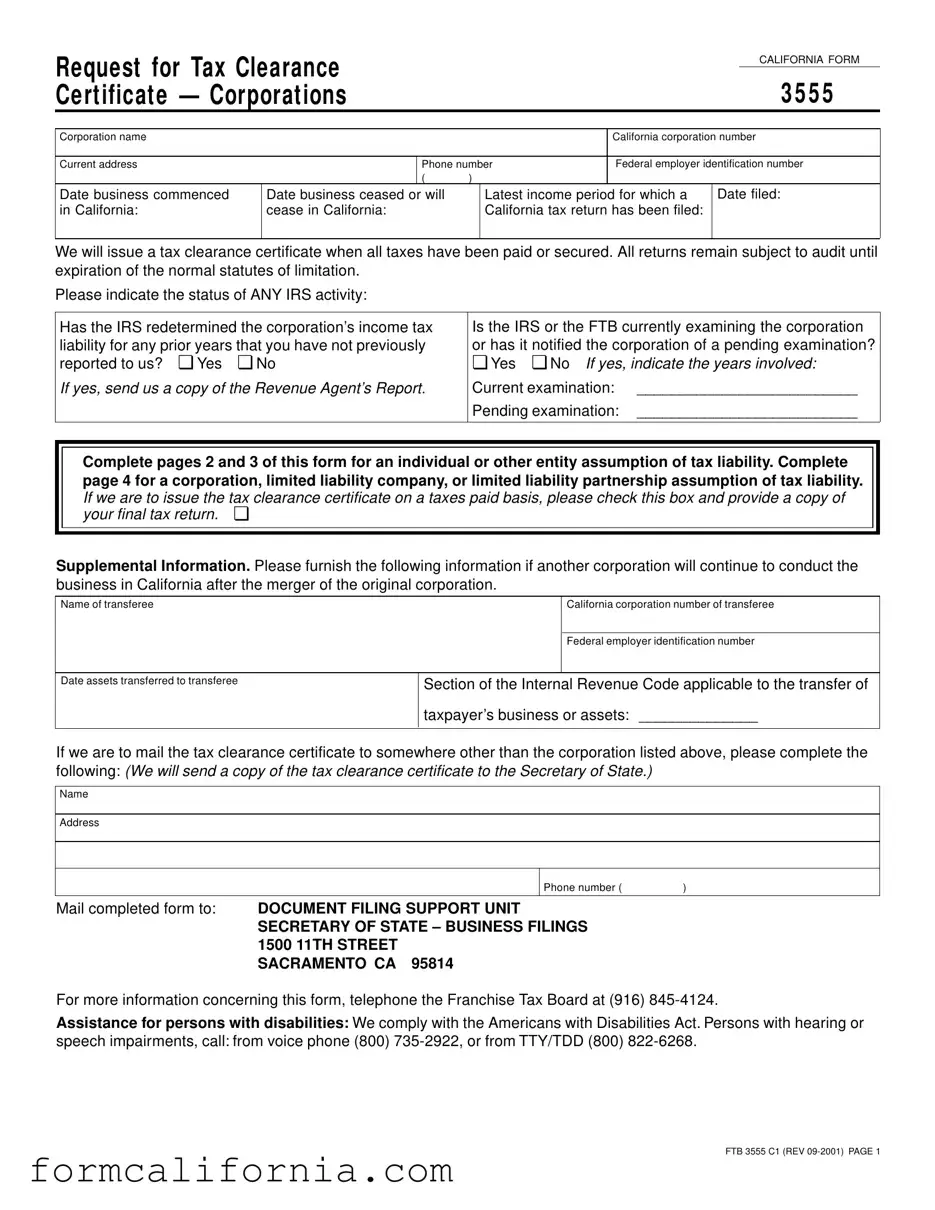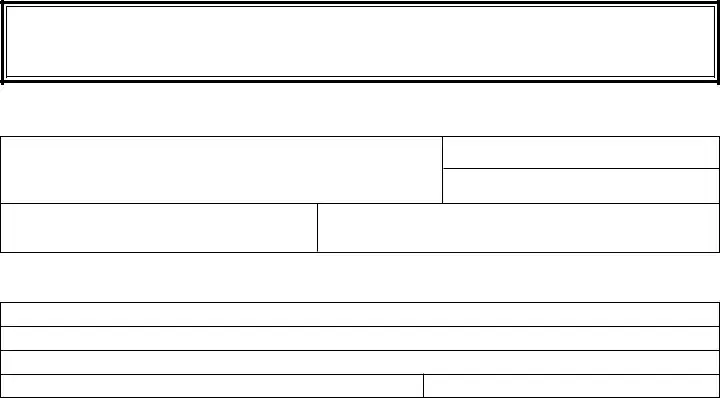The California 3555 form, concerning requests for tax clearance for corporations, shares similarities with various other documents across different legal and administrative processes. One such document is the IRS Form 8822-B, which businesses use to notify the Internal Revenue Service of a change in address or the identity of their responsible party. Both forms ensure that critical tax-related information is up-to-date, facilitating effective communication between corporations and regulatory bodies, and helping to maintain compliance with tax obligations.
Another document that shares features with the California 3555 form is the Certificate of Good Standing request form used in many states. This certificate, much like the tax clearance certificate, serves as proof that a corporation is compliant with the required state regulations and filings, and it is in good standing within the state of its incorporation. The underlying purpose of both documents is to attest to the legality and compliance of the business with state and federal obligations.
Similarly, the Application for Employer Identification Number (EIN), or IRS Form SS-4, parallels the California 3555 form in its role of registering an entity’s tax reporting obligations with an authority, albeit at the inception of the business's lifecycle. Where the Form SS-4 enables businesses to obtain an EIN necessary for tax purposes, the California 3555 form helps dissolve or reorganize entities in a manner that assures compliance with tax liabilities.
The Dissolution of Corporation form filed with a state Secretary of State is also akin to the California 3555 form, as both are integral to the process of legally ending or altering a corporation’s existence. The Dissolution form officially removes the corporation's obligations to file future reports and tax returns, while the 3555 form confirms that all current tax responsibilities have been settled or accounted for, marking an essential step in clearing the corporation’s final compliance hurdles.
An Offer in Compromise agreement with the IRS or a state tax authority, which allows businesses to settle their tax debts for less than the full amount owed, also shares common ground with the California 3555 form. Both documents are involved in resolving outstanding tax liabilities, although through different mechanisms, with the end goal of ensuring that businesses can move forward unencumbered by past tax debts.
The Statement of Information (SOI) filed with a Secretary of State, required annually or biennially, updates the state on a corporation’s current directors, officers, and address. While it focuses on current operational details rather than tax specifics, the SOI, like the 3555 form, ensures that a corporation’s most current information is on record, facilitating accurate communication and compliance monitoring.
Finally, the Unemployment Insurance Registration form submitted to a state's workforce agency shares a purpose with the California 3555 form by engaging with state regulatory requirements for operational businesses. Both forms help to establish or clarify the status of a business’s liabilities: the Unemployment Insurance form for payroll taxes and employee benefits, and the 3555 form for broader tax obligations during dissolution or reorganization phases.




